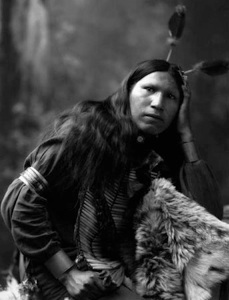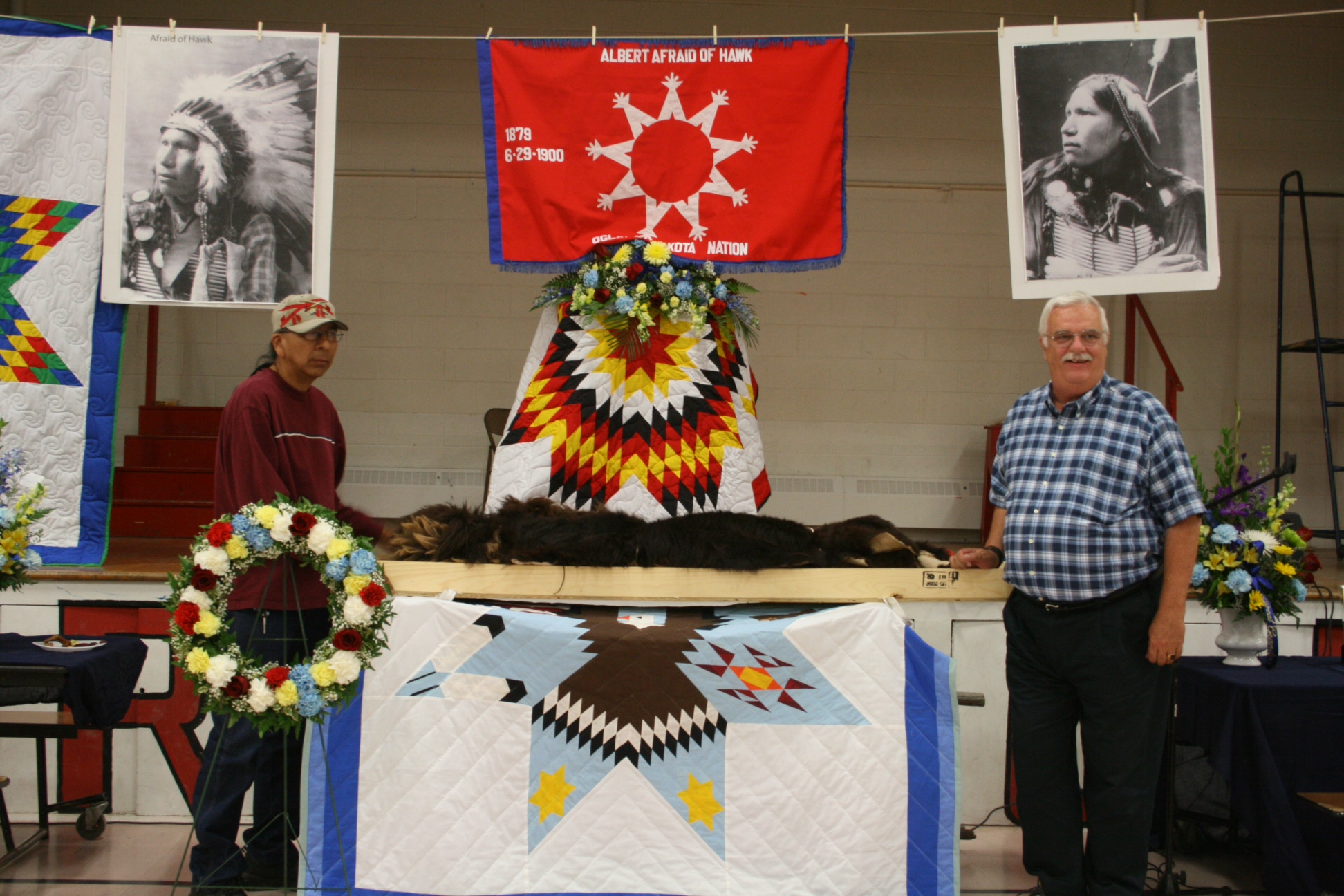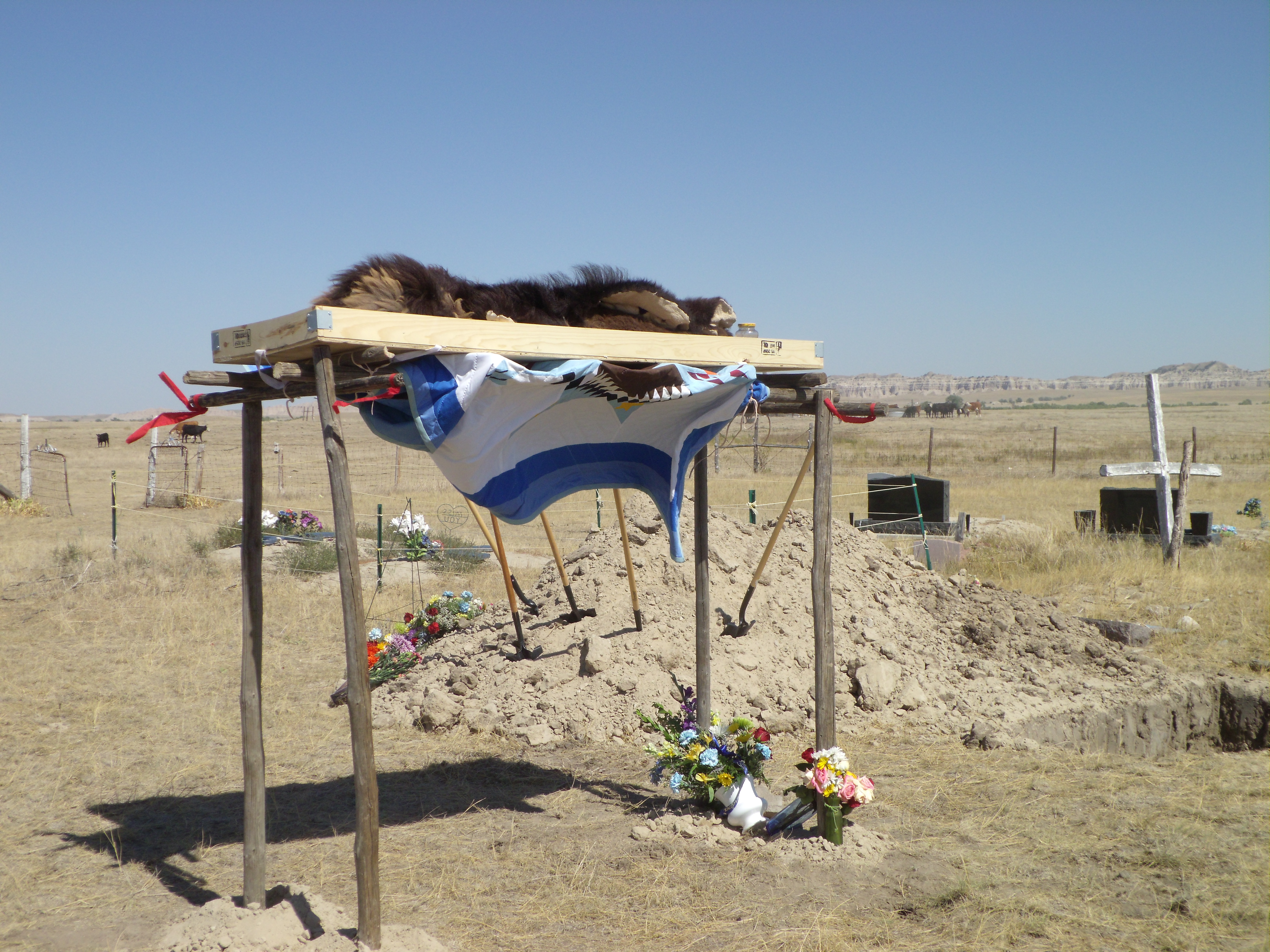Lakota stunt rider finally returns home
Air Date: 09/12/2012
Dakota Digest
By Jim Kent
The family of a Lakota man buried in Connecticut more than 100 years ago welcomed him home to the Pine Ridge Reservation this week. Today we attend the traditional burial ceremony for Albert Afraid of Hawk and learn how the Lakota view death - and life.
The sound of the drum echoes across the Northern Plains as the Oglala people welcome an ancestor home.
Albert Afraid of Hawk's remains arrive at the Wounded Knee School on a warm summer afternoon, wrapped in a buffalo robe and accompanied by members of his tiyospaye - or extended family.
For folks living in the 21st century, Buffalo Bill's Wild West Show is something you have to travel to Paris to see at the Disneyland theme park. But at the turn of the 20th century, it was considered one of the most exciting live shows around - touring the U.S., Great Britain and Europe.
Robert Young is an amateur historian. He says in 1900 a 20-year old Lakota man named Albert Afraid of Hawk, went on the circuit with Buffalo Bill. But Albert only made it as far as Connecticut.
"Several of the actors with the program were taken ill when they left New Haven." Young explains
One of those believed to have been stricken with food poisoning, says Young, was Albert Afraid of Hawk.
"He was taken to the hospital." Young comments. "It's 1900, but they still had the best doctors that they could come up with. And, you know, it still wasn't sufficient."
Albert was the only member of the show to die from his ailment. And though his burial was overseen by a fellow Lakota and Wild West Show rider, Albert Afraid of Hawk became a myth among the workers at Danbury Cemetery, as well as among his own people.
Oglala spiritual leader Rick Two Dogs explains.
"I knew of him," says Two Dogs. "But I never knew where he died or where he was buried. His sister was my grandmother. But she never spoke of him. She never said that, you know, I have a brother that's buried in Connecticut."
Part of the reason for this silence from his grandmother -and other family members, says Two Dogs, was the Lakota belief that one doesn't speak of the dead.
"It's disrespectful to them," Two Dogs explained. "We have a belief that when they pass from this world...that you let them go. But then when you talk about them or mention their name, you rekindle that spirit where they are not at peace either. So, they feel sad, also, when you speak of them."
While the Lakota remained silent about Albert Afraid of Hawk, his rumored presence at the Danbury Cemetery grew. When Robert Young started administrative duties there, he began researching the rumor. He eventually found a burial card labeled "Afraid of Hawk", and located the Lakota man's unmarked grave.
Calls to the Pine Ridge and Cheyenne River Sioux reservations led Young to Marlis Afraid of Hawk and her father, Daniel - Albert's last living nephew. As the long and involved repatriation process was initiated, Marlis became concerned over its success...until she had a dream.
"In my dream I was 5 or 6 years old," Marlis remembers. "And my siblings and parents were gone. And I got scared. So, I went outside and I was looking for them but they were nowhere I sight. And here was this person that was coming from the north. And he had long hair, but I didn't recognize his face. So, I went back into our house. I heard him playing a flute. So, I went back outside. I heard him clearly. He said: "Yu` pah". That means "come here". When he said that, he waved like this. So all the clouds they came together."
That's when horses and then Lakota people stepped down from the clouds.
"The grandmothers, the grandfathers, the children... and even a dog with travois," says Marlis.
After attending a traditional ceremony, Marlis understood that the Lakota who came from the sky were her ancestors, and the man with the long hair was Albert Afraid of Hawk -asking her to come to Connecticut to get him. This knowledge gave Marlis the determination to persevere in her efforts to assist Robert Young in bringing her grandfather home.
Despite the four years of research and red tape, and a visit to Danbury, Marlis says she's thrilled that her grandfather is back.
"And it makes me just so happy," Marlis comments. "And I'm glad the people that were involved in all of this, they are here...to show respects for Albert."
The long funeral cortege begins its winding journey north to the cemetery where Albert's remains - accompanied by traditional foods to be given to his family in the spirit world - are placed on a wooden scaffold.
One lone figure - a grandson - watches over Albert until nightfall, when he is buried in a nearby grave. The heart of the Lakota nation, says Rick Two Dogs, beats a little stronger knowing that another of its sons has returned home.
Photo 1. Albert Afraid of Hawk – Library of Congress photo
Photo 2. Robert Young (right) stands alongside Albert Afraid of Hawk’s remains at the Wounded Knee School gymnasium – Photo by Jim Kent
Photo 3. Albert Afraid of Hawk’s remains lie atop a traditional wooden scaffold on the Pine Ridge Reservation. Photo by Jim Kent



![]()
![]()
![]()
![]()
![]()
![]()
![]()
Click here to play Real Media:









